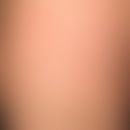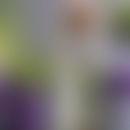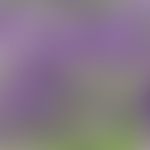Synonym(s)
DefinitionThis section has been translated automatically.
Hardy half-shrub growing up to 60 cm high with strongly branched branches and upright twigs, narrow lanceolate leaves and purple flowers. The genus Lavender belongs to the labiates with many subgenera (see illustration). Lavender was the medicinal plant of the year 2020 in Germany and Austria.
Phytotherapeutically, flowers (lavender flowers - Lavandulae flos) are used. The essential oil contained therein is also used medicinally (lavender oil - Lavandulae aetheroleum).
OccurrenceThis section has been translated automatically.
Naturally occurring mainly in the Mediterranean area. Cultivated from Central Europe to Scandinavia.
You might also be interested in
Field of application/useThis section has been translated automatically.
Lavendula angustifolia is the parent plant of Lavendulae flos, the not yet blossomed lavender flowers with a blue calyx. Several monographs exist for Lavendulae flos, including Commission E.
Monographs of the HMPC exist for Lavendulae aetheroleum, the lavender oil (see illustration), which is officinal according to Ph.Eur.8 and ÖAB. As a traditional phytotherapeutic for mild stress symptoms, exhaustion and sleep aid. The treatment of functional circulatory disorders is mentioned as a further indication.
Silexan®, a plant-based active ingredient with an anxiolytic effect, is obtained by steam distillation of Lavandula angustifolia flowers. Silexan is a medicinal lavender oil of the highest pharmaceutical quality. A "medicinal lavender oil" is used as a systemic therapeutic agent against anxious moods as well as depressive moods. The preparation Lasea® , which is administered once daily as a soft capsule, is commercially available and its anxiolytic efficacy is comparable to 20mg paroxetine or 0.5mg lorazepam.
Contradictory data regarding the ability to drive: Current studies (Möller 2021) say that lavender oil has no sedative effect and does not impair the ability to drive - the monograph of the HMPC, which we doctors should adhere to, states: "May impair the ability to drive and operate machinery".
Lavender oil inhibits the growth of fungi and micro-organisms, has a disinfectant effect like hardly any other plant and at the same time has an anti-inflammatory and pain-relieving effect.
Lavender sachets or cushions have been placed between items of laundry for centuries as a natural moth repellent.
Lavender oil is mainly used as a perfume component in soaps, shaving lotions, creams and numerous other cosmetics.Lavendela angustifolia water (INCI) is used as a fragrance in cosmetic formulations.
DosageThis section has been translated automatically.
Registered by the EMA (HMPC) as a bath additive in a dosage of 10-50 g/10 l of water as a single and daily dose.
Adolescents, adults and seniors as a tea: 1-2 g in 150 ml of boiled water, as a tincture 2-4 ml, 3 times / day.
Not recommended for children under 12 years.
To date, no cases of overdose known.
Undesirable effectsThis section has been translated automatically.
Lavender oil consists of numerous components, including geraniol, linalool, linalyl acetate, which can be possible triggers of contact allergies.
Sensitizing potency: Weak. Frequency of sensitization: Very rare.
Despite the widespread use of lavender oil, only isolated cases of allergic contact dermatitis have been reported in the literature (hairdressers, beauticians).
In the case of etiologically unexplained dermatitic facial changes, lavender oil should be considered, which was dripped onto the pillow to help the patient fall asleep.
The estrogenic effect of lavender should be noted - - premature breast growth in children.
In infants and small children, inhaling lavender scent can (in rare cases) lead to laryngospasm and respiratory arrest.
ContraindicationThis section has been translated automatically.
Do not use during pregnancy and lactation due to lack of data.
Infants and toddlers up to the age of 2 years - laryngospasm, respiratory arrest!
Known allergy to the plant
Trade namesThis section has been translated automatically.
Cefarheumin® Ointment, Gerner Nervinum N, Kytta-Plasma®, Kytta-Ointment®, Silexan®
LiteratureThis section has been translated automatically.
- https://www.ema.europa.eu/en/documents/herbal-monograph/final-community-herbal-monograph-lavandula-angustifolia-p-mill-flos_en.pdf
- Hausen BM, Vieluf K (1997) Allergy plants, plant allergens. Ecomed Verlag Landsberg/Munich 175-177
- Hajhashemi V et al. (2003) Anti-inflammatory and analgesic properties of the leaf extracts and essential oil of Lavandula angustifolia Mill. J Ethnopharmacol 89: 67-71.
- Kapser S et al. (2017) Silexan in anxiety disorders: Clinical data and pharmacological background. World J Biolo Psychiatry 19: 412-420.
- Ramsey JT et al. (2019) Lavender Products Associated With Premature Thelarche and Prepubertal Gynecomastia: Case Reports and Endocrine-Disrupting Chemical Activities. The Journal of Clinical Endocrinology & Metabolism 104: 5393-5405.
- Möller H-J (2019) Anxiety, restlessness, sleep disorders in the elderly - possibilities of psychophytopharmacotherapy http://www.kongress.dggpp.de/abstracts/abs_69.htm
- Möller H-J (2021) Silexan does not affect driving performance after single and multiple dose applications: results from a double-blind, placebo and reference-controlled study in healthy volunteers. Journal of Psychiatric Research, 136: 543-551.
- https://arzneipflanzenlexikon.info/lavender.php
- Wenigmann M. (2017) Phytotherapy medicinal drugs, phytopharmaceuticals, application. Urban & Fischer, pp. 144-145







